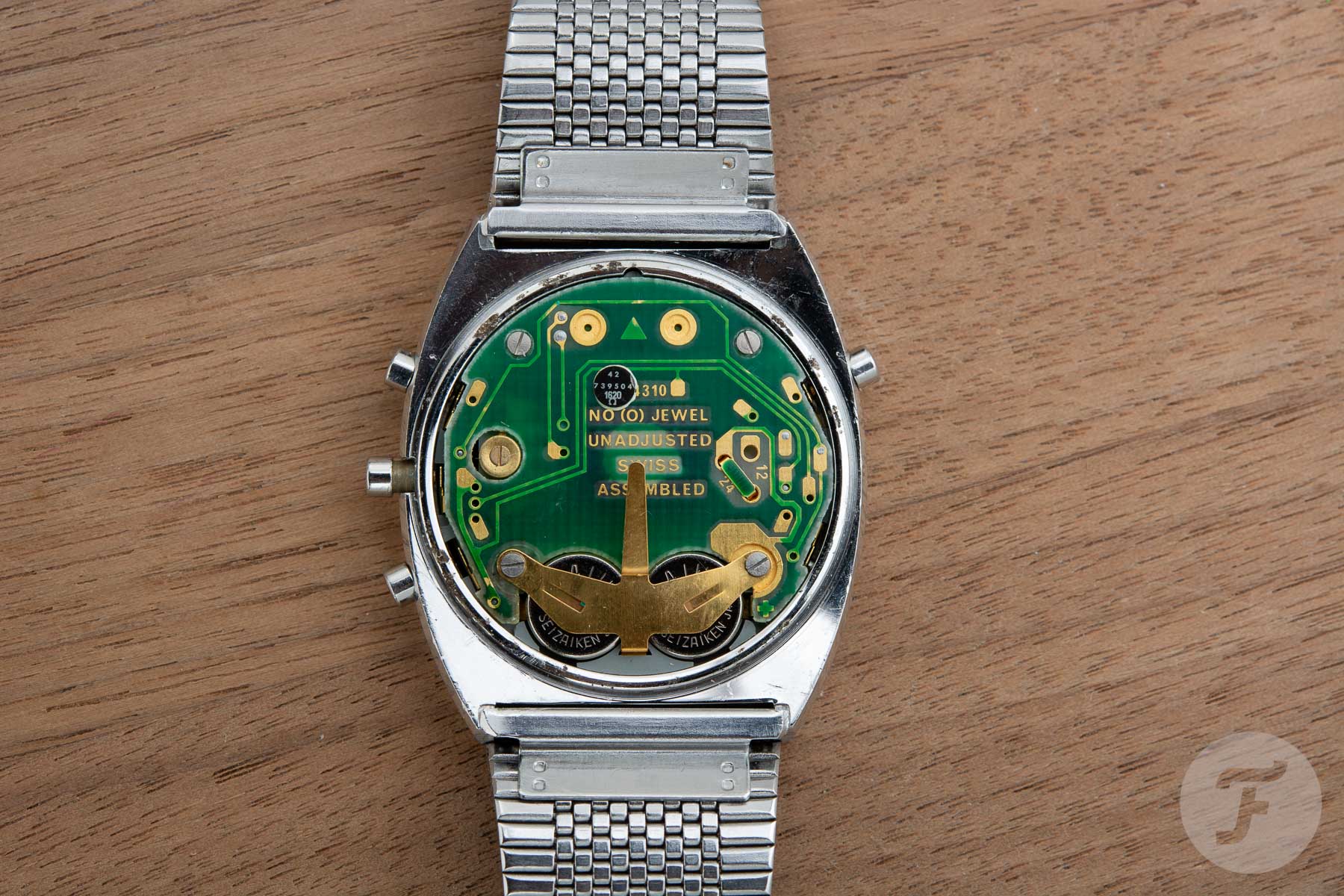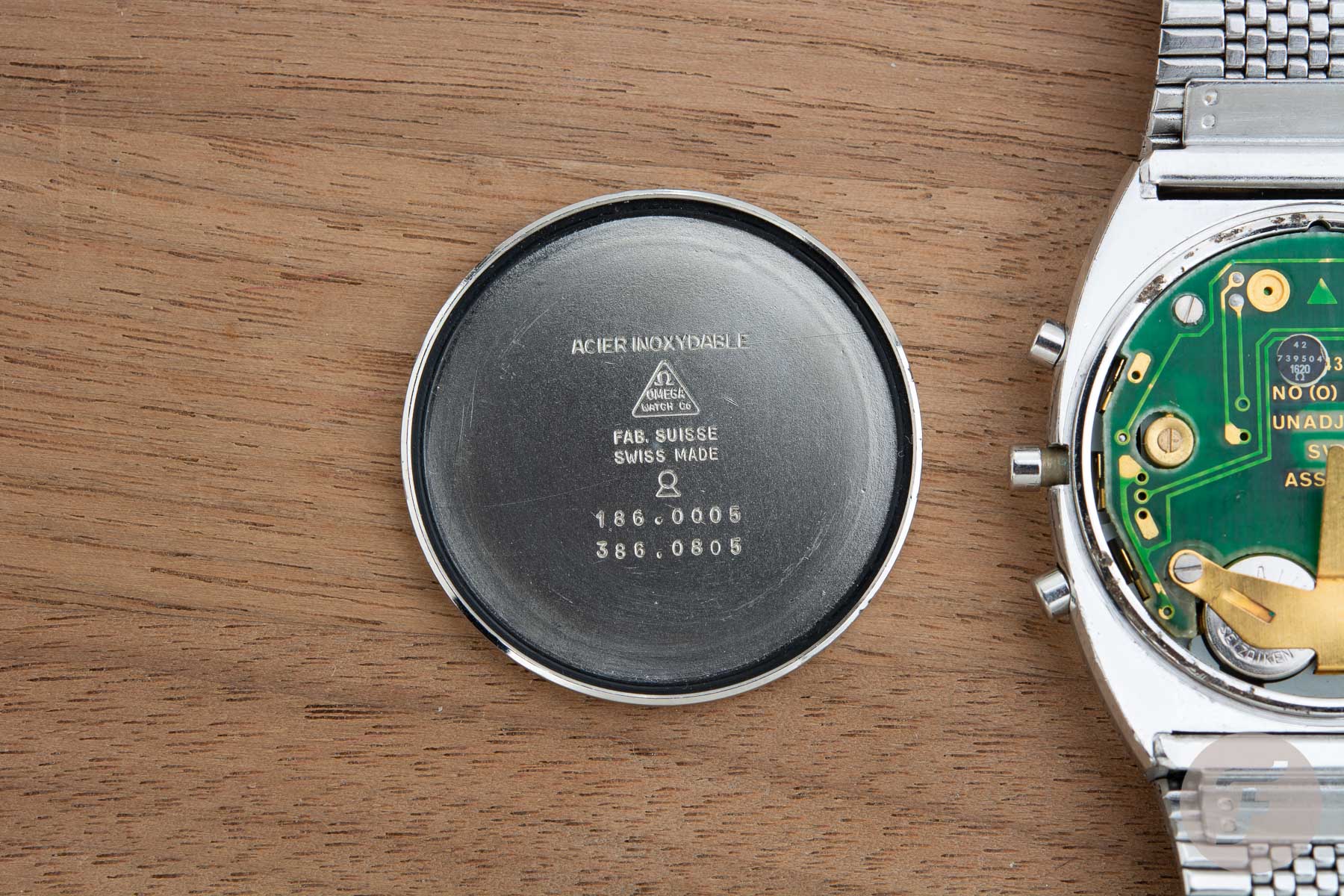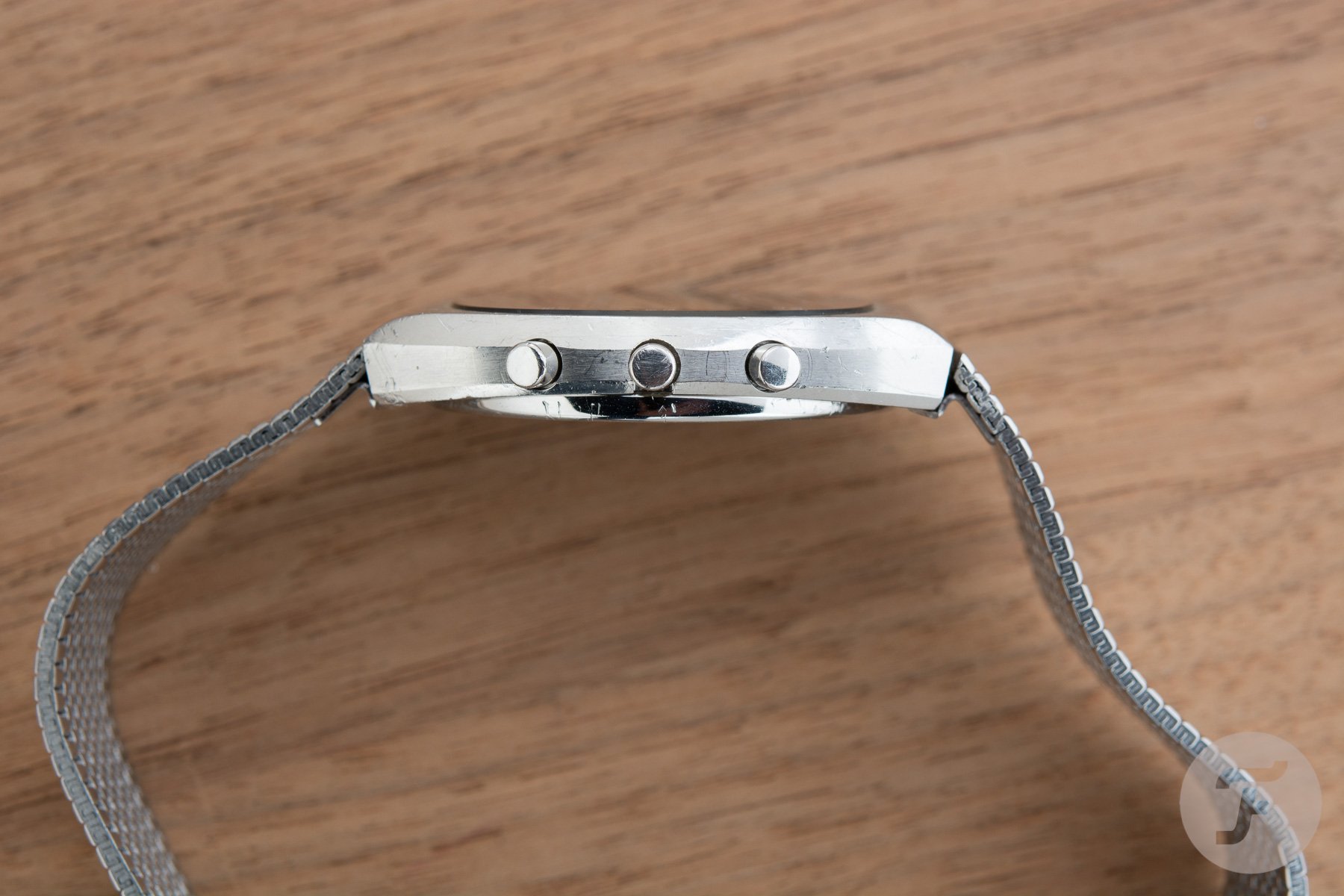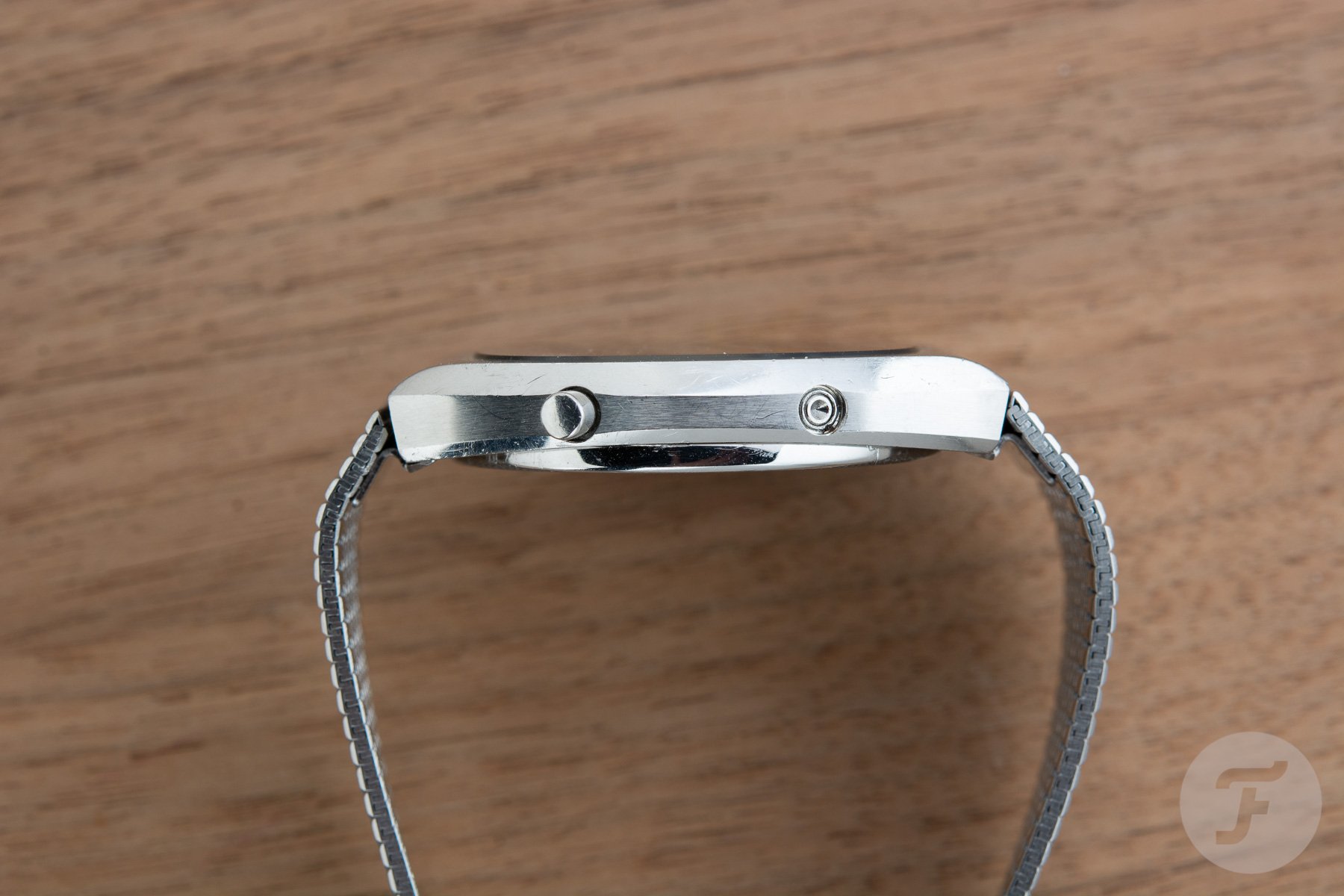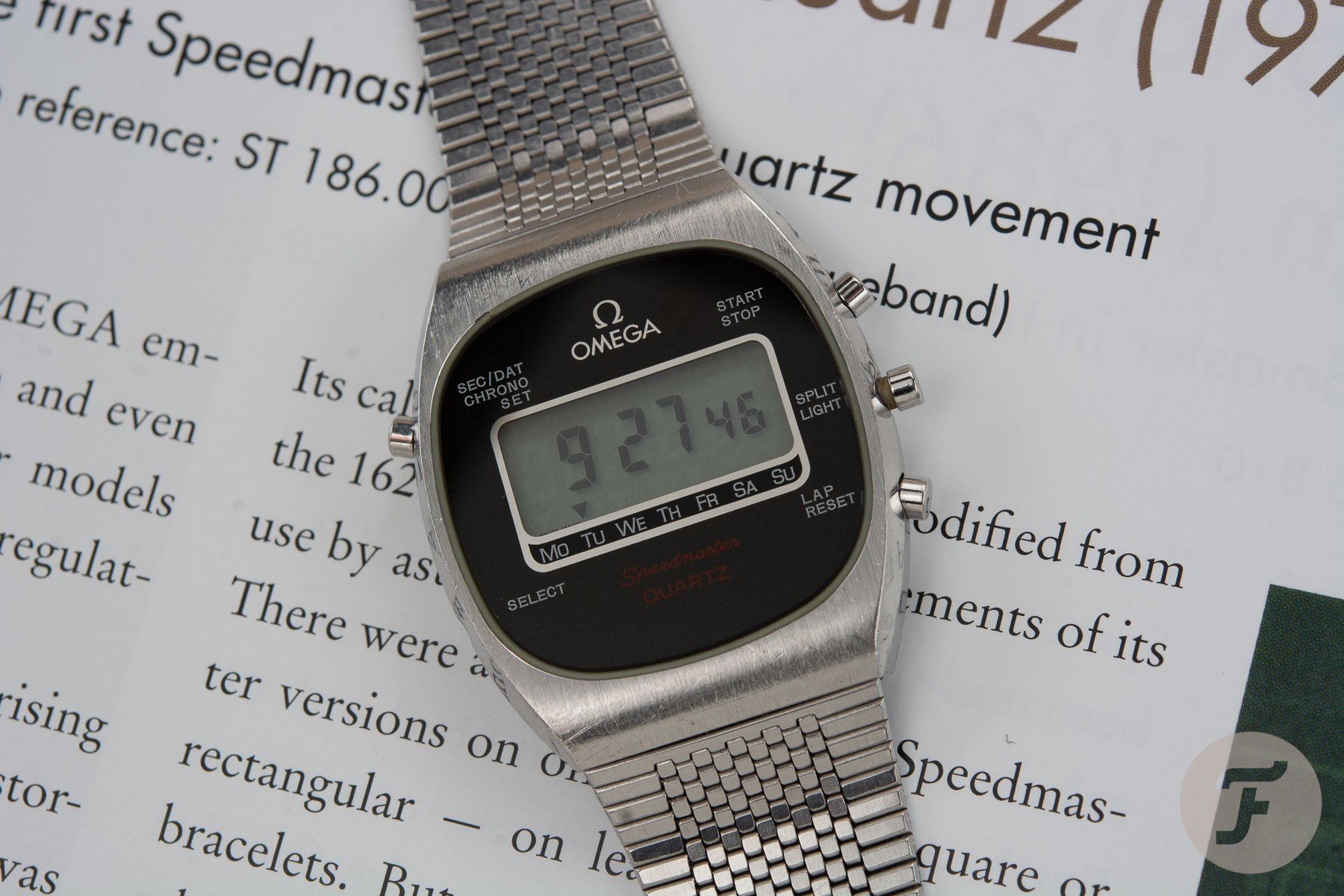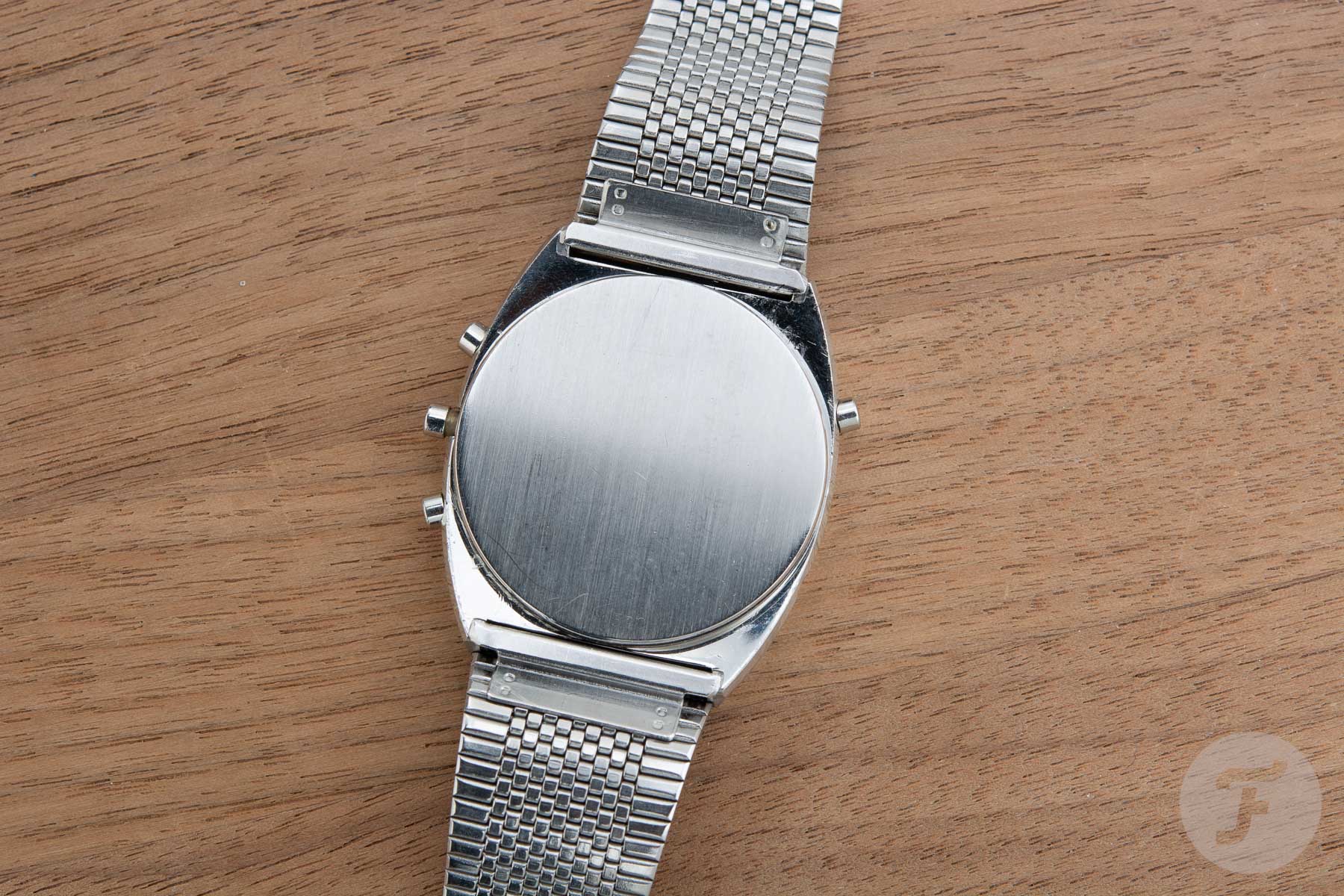Speedy Tuesday – A Bit Of LCD Speedmaster Love
Even up till today, there’s a Speedmaster with an LCD screen in the collection, the X-33 (since 1998). But even before that, there were several LCD Speedmaster references in production.
Today, I will focus on just one of these models, the reference 186.0005. These were produced from the mid to end of the 1970s. The LCD Speedmaster always intrigued me, even during my first days of watch collecting. Whether it has to do with my year of birth (1977) and growing up with digital watches, or the fact that it reminds me of my friendship with the legendary Chuck Maddox (I once bought one for him here locally for 200 Dutch guilders and shipped it to him), the LCD has a special place in my Speedmaster heart.
For sure, it isn’t the looks of the LCD Speedmaster, because except the round version (186.0004) that bears the additional ‘Professional’ designation on the dial these watches are pretty ugly. Beauty is in the eye of the beholder of course, but I think that someone who loves the look of these watches is probably blinded by nostalgia, which is a valid reason as well.
LCD Speedmaster 186.0005
It took me about 20 years to purchase one myself after I bought one for Chuck (with the original instruction manual, which he scanned and published here). I have a box full of watches that I never wear but just bought them because I found them interesting or fun. I guess I knew that an LCD Speedmaster would end up in that box as well, and for that, the prices of the interesting LCD Speedmaster models are a bit too high. At least for me. So, when someone from the Speedy Tuesday community offered me one for sale, at a fair price, I couldn’t say no.
To me, this is not the most exciting model, but the LCD Speedmaster (whatever reference) marks an exciting period in time, and especially in the context of Speedmasters. One of them, the 186.0004, also known as the LCD Moonwatch, is the most interesting reference for sure, but it has become quite expensive. But there are surely collectors for those. An excellent reference site for that model can be found here, made by our friend Kov.
LCD Speedmaster Movement and Functions
What the 186.0004 and my 186.0005 have in common (besides an LCD screen and the 1970s look), is the caliber 1620 movement. It is a quartz-powered movement (of course) at a 32768 Hz frequency. The liquid crystal display has space for 6 digits, and can indicate time (hh:mm:ss), date and features a chronograph (split-second). Also, there’s a light function that will work in time and chronograph mode. The calendar is not perpetual but needs correction every 4 years. Interesting enough, the manual indicates this watch was available in 12H and 24H format. As you can see below, there’s a little jumper on the movement where you have to set the watch to either 12H or 24H mode. Very user-friendly.
As you can see, there are two batteries in this movement (it came with two Vartachron 547 batteries) which will last for approximately 2 years. Almost unheard of today, as the Speedmaster X-33 which much more functionality will last much longer than that. Or any digital watch today. Just above the center, you will find this small round cap, which indicates the caliber number (1620) but also the serial number. The caliber 1620 movement was a development by Omega in collaboration with the predecessor of Swatch Group (SSIH).
Caliber 1620
The movement is also the weak spot for this watch, and another reason for me not to spend too much money on an LCD Speedmaster. These are difficult to repair, as parts are becoming more scarce and thus more expensive.
On the inside of the case back, you will find two numbers. The reference number 186.0005 and case number 386.0805. The snapback is easy to remove with a watch knife and often, the condition of the gasket is essential to check, but also check if there are traces of oxidation on the movement. It is usually an indicator whether a watch has had proper maintenance (or has been damaged at some point by moisture).
With my 18-19cm wrist, this watch is small. The diameter of the case is approx.36mm, but it is just skinny. Every time I put this watch on my wrist, I need some minutes to get used to this watch on the wrist again. Unbelievable that this was more or less the standard in the late 1970s and early 1980s.
Operation
The case has a subtle brushed finish, has a nice angle on the case band and as written above, a snap-on case back. On the sides of the watch, you will find three buttons and one micro corrector. The micro corrector is used to set the time and date, and you will need a small toothpick to operate it. With the upper left pusher, you select the mode of the watch, time or chronograph. In time mode, you can choose (by pushing the button again) between displaying running seconds or the day. When the chronograph is running, and you switch back to time mode, blinking small triangles indicates the chrono is still on. On the right side, you will find three pushers. The upper right pusher is used to start/stop the chronograph, and the lower right is to reset. The pusher in the right center is to utilise the split chronograph functionality (and the light).
The pushers are another weak spot of the watch. When I received this watch, the pushers didn’t function properly. I handed it over to our diva watchmaker, who visited our Fratello HQ this time driving his yellow Countach from 1988, wearing his furry Gucci loafers. He did a quick analysis of the watch and noticed that all buttons were just stuck due to gunk. So he took it with him, cleaned it, replaced the two batteries and now it all works as it should again. So I guess that if you run into a watch like this and it is running, but the pushers won’t move, it is an easy fix.
An all brushed and empty case back looks cool, and it left (or perhaps still does) leaves some space for a nice personal message. The bracelet on this watch is quite comfortable, and very easy to adjust the length.
The small clasp is easy to operate, and although feeling a bit flimsy, it does lock properly. The Omega logo is recessed in the clasp and has a diagonal striped decoration. It looks quite neat.
Where to go and what to pay
If you like this kind of quirky stuff, you can browse websites like Chrono24 and eBay all day long I guess. There are always a few out there for sale, and prices vary from a few hundred Euros up to thousands of Euros for the Moonwatch LCD with all accessories. This LCD Speedmaster 186.0005 is probably one of the cheaper models out there, and I paid about €600,-. I have seen them for less, and I’ve seen them for a bit more. The Omega Speedmaster LCD 186.0005 was also available with a gold plated finish, including the bracelet. It is a fun piece and especially if you can source one for a reasonable price, it is a pretty nice addition for any Speedmaster collector.
Do you have an LCD Speedmaster and want to share your story? Drop us a line at [email protected]


